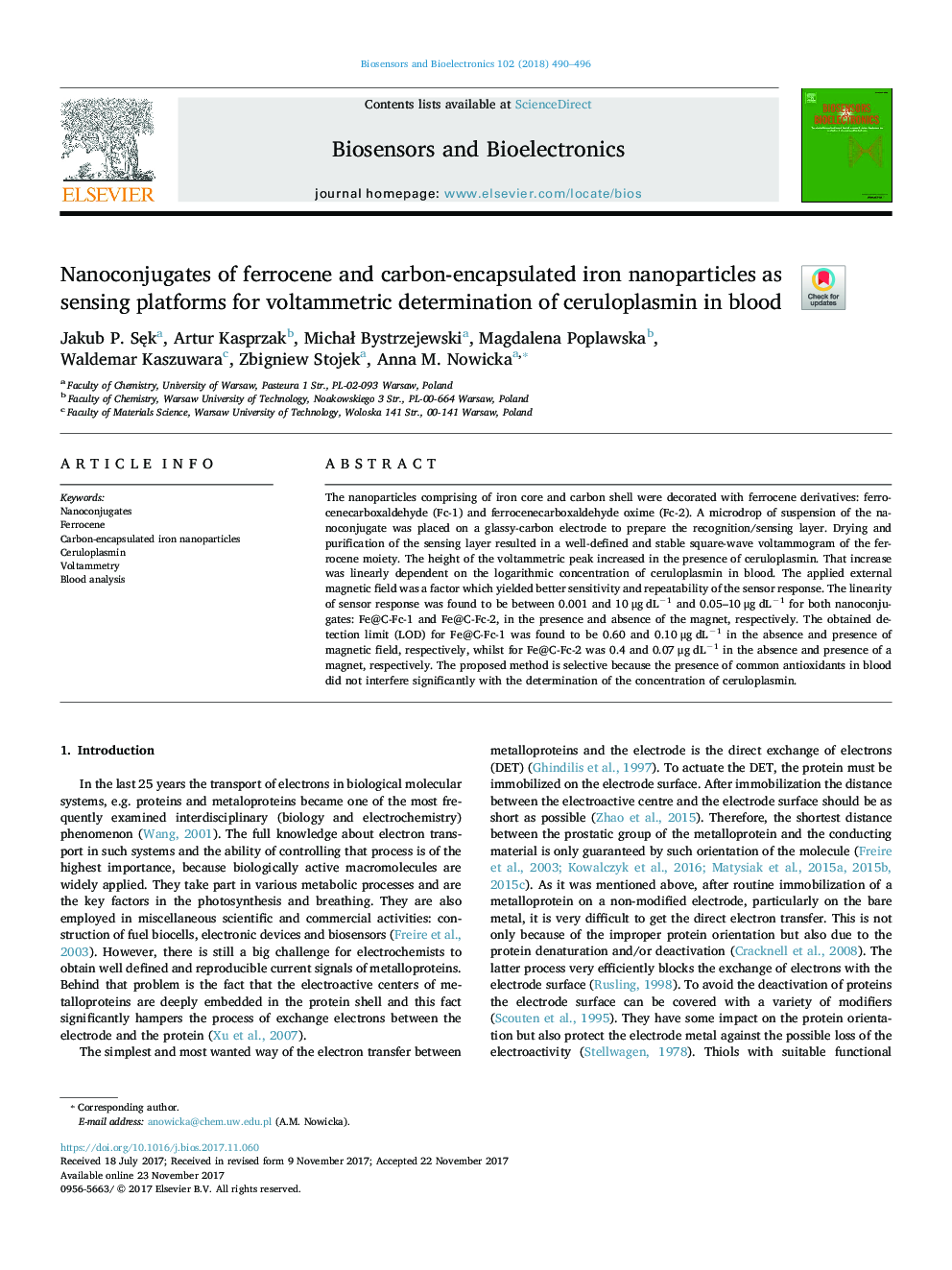| Article ID | Journal | Published Year | Pages | File Type |
|---|---|---|---|---|
| 7229970 | Biosensors and Bioelectronics | 2018 | 7 Pages |
Abstract
The nanoparticles comprising of iron core and carbon shell were decorated with ferrocene derivatives: ferrocenecarboxaldehyde (Fc-1) and ferrocenecarboxaldehyde oxime (Fc-2). A microdrop of suspension of the nanoconjugate was placed on a glassy-carbon electrode to prepare the recognition/sensing layer. Drying and purification of the sensing layer resulted in a well-defined and stable square-wave voltammogram of the ferrocene moiety. The height of the voltammetric peak increased in the presence of ceruloplasmin. That increase was linearly dependent on the logarithmic concentration of ceruloplasmin in blood. The applied external magnetic field was a factor which yielded better sensitivity and repeatability of the sensor response. The linearity of sensor response was found to be between 0.001 and 10 μg dLâ1 and 0.05-10 μg dLâ1 for both nanoconjugates: Fe@C-Fc-1 and Fe@C-Fc-2, in the presence and absence of the magnet, respectively. The obtained detection limit (LOD) for Fe@C-Fc-1 was found to be 0.60 and 0.10 μg dLâ1 in the absence and presence of magnetic field, respectively, whilst for Fe@C-Fc-2 was 0.4 and 0.07 μg dLâ1 in the absence and presence of a magnet, respectively. The proposed method is selective because the presence of common antioxidants in blood did not interfere significantly with the determination of the concentration of ceruloplasmin.
Keywords
Related Topics
Physical Sciences and Engineering
Chemistry
Analytical Chemistry
Authors
Jakub P. SÄk, Artur Kasprzak, MichaÅ Bystrzejewski, Magdalena Poplawska, Waldemar Kaszuwara, Zbigniew Stojek, Anna M. Nowicka,
